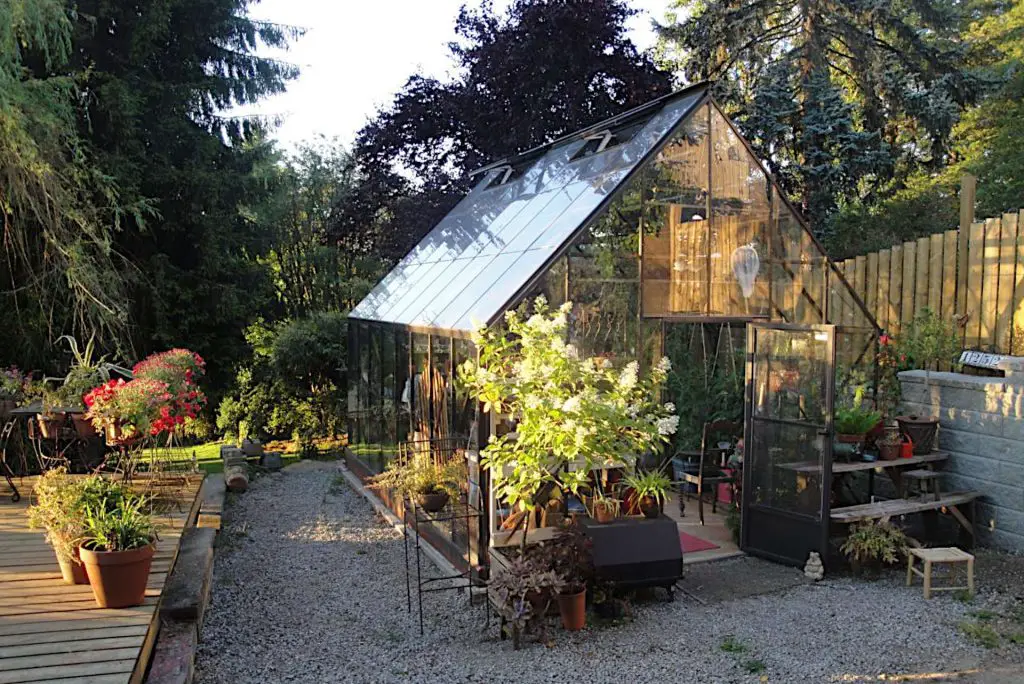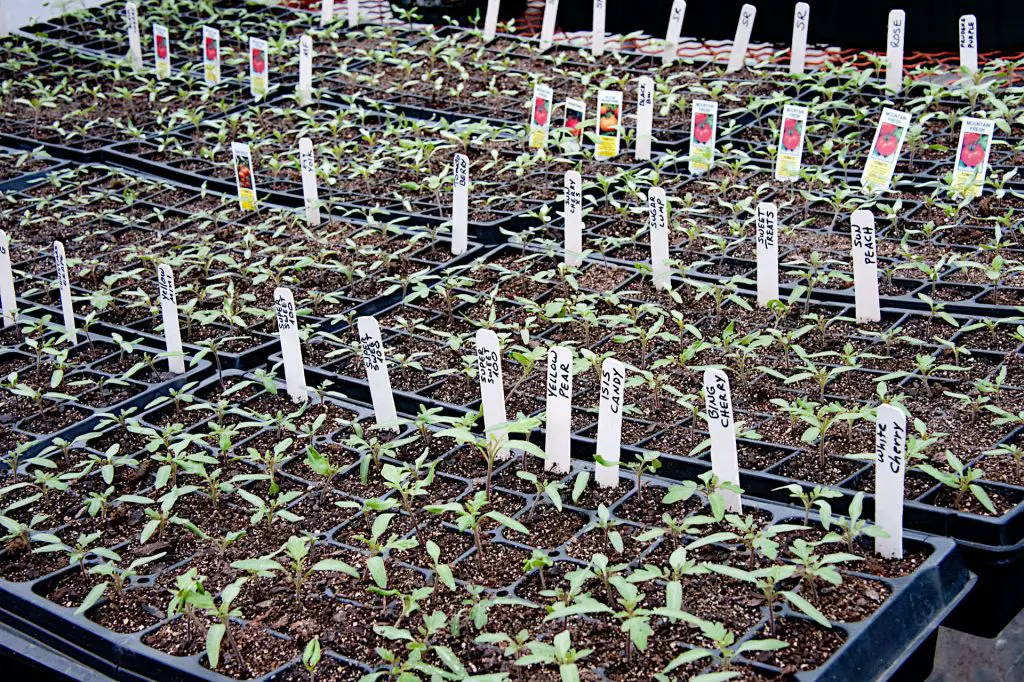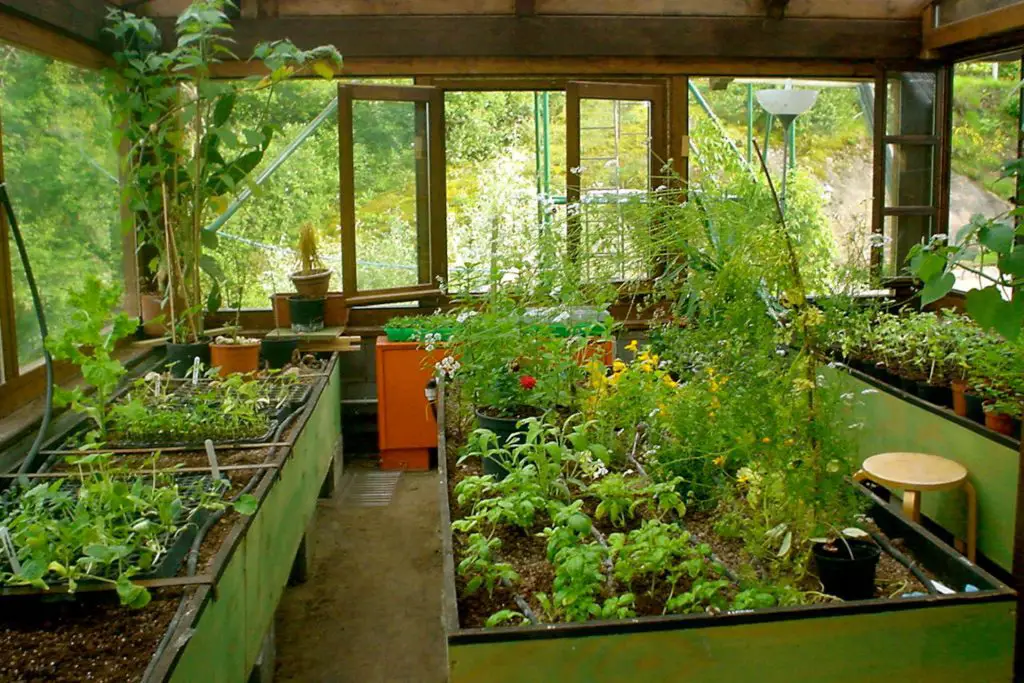Greenhouses: How to Plan Your Layout
The magic of a well-planned greenhouse can transform the yield that you are able to achieve from your available space. Whether you’re a seasoned gardener or a budding enthusiast, the key to greenhouse success lies not just in what you grow, but how you organize your space. In this guide, we’ll unlock the secrets to creating a greenhouse layout that maximizes both productivity and joy, turning your green dreams into a thriving reality.
Common Greenhouse Sizes

The most common greenhouse size for growers is 8 to 10 feet wide, though large greenhouses can range from 12 to 20 feet in width. Some typical greenhouse sizes include:
For smaller gardens, a 6’x6′ or 6’x4′ greenhouse can still work just as well as large spaces but will need more time when planning your planting so that you can get the maximum yield possible.
For larger gardens, greenhouses up to 20 feet wide can be accommodated, with the most popular sizes being 8’x10′ to 10’x12′.The best greenhouse size ultimately depends on the available garden space, growing needs, and budget. Many gardeners wish they had bought a larger greenhouse initially. The key is to choose the biggest greenhouse that can fit your space.
Future Expansion Considerations: Planning for Growth

Of course size determines layout. When designing your greenhouse, it’s wise to think beyond your current needs and consider potential future expansion. A forward-thinking approach can save you time, money, and effort in the long run.
Modular Design Concepts:
- Expandable structures: Choose a greenhouse design that allows for easy addition of modules or extensions. This might include removable end walls or connectable segments.
- Flexible internal layouts: Opt for movable benches, shelving units, and growing systems that can be easily reconfigured as your needs change.
- Scalable systems: Install irrigation, heating, and ventilation systems that can be expanded or upgraded without a complete overhaul.
Planning for Technology Upgrades:
- Smart controls: Consider installing a basic automation system that can be expanded later. This might include controllable vents, irrigation timers, or climate sensors.
- Electrical capacity: Ensure your initial electrical setup has extra capacity for future grow lights, fans, or hydroponics equipment.
- Data infrastructure: If possible, include wiring for internet connectivity to support future smart greenhouse technologies.
Adaptable Spaces for Changing Needs:
- Multi-purpose areas: Design spaces that can serve different functions as needed, such as convertible propagation zones or adjustable growing beds.
- Vertical expansion potential: Consider the structural capacity for adding vertical growing systems or hanging baskets in the future.
- Crop rotation flexibility: Plan your layout to accommodate different types of crops as your interests or market demands change.
Additional Considerations:
- Zoning and permits: Research local regulations regarding greenhouse expansions to ensure your plans are compliant.
- Site planning: If possible, situate your initial greenhouse with space around it for potential expansion.
- Resource capacity: Consider future needs for water, electricity, and heating when setting up initial systems.
- Storage expansion: Plan for increased storage needs as your operation grows, possibly with an attached shed or storage area.
While it might seem far off factoring future expansion considerations into your initial greenhouse design, you’ll create a more versatile and long-lasting growing space. Remember, the goal is to build flexibility into your greenhouse from the start, allowing it to evolve with your gardening journey. While you may not need all these features immediately, having the groundwork in place will make future upgrades and expansions much smoother and more cost-effective.
Greenhouse Layout: Factors to Consider

When planning your greenhouse layout, the first step is deciding what you want to grow. Whether it’s vegetables, flowers, or a mix of both, your choices will shape the entire design. Let’s explore how different crops influence the layout and what you need to consider for an efficient and productive greenhouse.
Vegetables: Maximizing Space and Yield
Growing vegetables in a greenhouse is a fantastic way to extend your growing season and enjoy fresh produce year-round. However, vegetables often require ample space and careful planning.
- Raised Beds and Containers: Utilize raised beds or large containers to provide the necessary depth for root vegetables like carrots and potatoes. Raised beds also help with drainage and soil management.
- Vertical Gardening: For vining plants such as tomatoes and cucumbers, consider trellises or vertical gardening systems. This approach saves ground space and improves air circulation, reducing disease risk.
- Companion Planting: Group plants with similar water and light needs together. For example, plant leafy greens near tomatoes to benefit from the shade they provide. In addition companion planting can help prevent pests.
Flowers: Creating a Vibrant Display
Flowers can turn your greenhouse into a year-round oasis of color and fragrance. The layout for flowering plants focuses on aesthetics and accessibility.
- Tiered Shelving: Use tiered shelving or plant stands to display flowers at different heights. This arrangement not only maximizes space but also creates an eye-catching display.
- Hanging Baskets: Hanging baskets are perfect for trailing plants like petunias and fuchsias. They add a vertical element and free up bench space for other plants.
- Seasonal Rotation: Plan for seasonal flowers to ensure continuous blooms. Rotate your plants based on their blooming cycles to keep your greenhouse vibrant throughout the year.
Combination: Balancing Beauty and Functionality
If you want the best of both worlds, combining vegetables and flowers in your greenhouse requires strategic planning to ensure each plant’s needs are met without compromising the other.
- Zoning: Create specific zones for vegetables and flowers. This separation helps manage their differing needs in terms of light, water, and space.
- Interplanting: Some flowers, like marigolds and nasturtiums, can be interplanted with vegetables. They not only add beauty but also repel pests and attract beneficial insects.
- Pathways and Accessibility: Ensure you have clear pathways for easy access to all plants. Good layout planning allows for efficient watering, harvesting, and maintenance.
Storage and Work Areas: Organizing for Efficiency

A well-planned greenhouse isn’t just about plant space—it’s also about creating efficient work areas and smart storage solutions. Proper organization can save time, reduce frustration, and make your greenhouse experience more enjoyable.
Tool Storage Solutions:
- Wall-mounted tool racks: Utilize vertical space by installing pegboards or slat walls. These allow you to hang frequently used tools like pruners, trowels, and watering cans within easy reach.
- Mobile tool carts: For larger greenhouses, consider a wheeled cart that can be moved around as needed. This is ideal for storing and transporting heavier tools and supplies.
- Sealed containers: Store seeds, fertilizers, and pest control products in airtight containers to protect them from moisture and pests. Label clearly for easy identification.
Potting Bench Placement:
- Location: Position your potting bench near the entrance for easy access when bringing in new plants or materials.
- Size: Ensure the bench is large enough for your needs but doesn’t impede movement in the greenhouse.
- Features: Look for benches with built-in storage, a soil catch tray, and perhaps a small sink if plumbing is available.
- Lighting: Place the bench where it receives good natural light, or install task lighting above it for detailed work.
Compost and Soil Storage:
- Bins: Use sturdy, covered bins for storing different types of soil mixes and amendments. This keeps them dry and easily accessible.
- Compost area: Producing your own compost is a great way to enhance plant growth. If space allows, designate a small area for a compact compost bin to recycle plant waste.
- Vertical storage: Consider wall-mounted shelves or stacked containers for storing smaller quantities of specialized soils or amendments.
Things to Take Into Account :
- Workwear storage: Install hooks near the entrance for aprons, gloves, and sun hats.
- Record-keeping area: Dedicate a small, dry space for keeping gardening journals, plant labels, and reference materials.
- Cleaning station: Set up an area with cleaning supplies for maintaining tools and work surfaces, crucial for preventing disease spread.
If you spend time thoughtfully organizing your storage and work areas, you’ll create a more functional and enjoyable greenhouse environment. Remember, the key is to keep frequently used items easily accessible while maximizing your growing space. Regularly reassess your setup and don’t hesitate to make adjustments as your needs change throughout the growing seasons.
Final Thoughts
Choosing what to grow in your greenhouse significantly impacts its layout. Whether you’re focusing on vegetables, flowers, or a combination, consider the specific needs of your plants to create an efficient and beautiful growing space. Careful planning ensures that your greenhouse remains a productive and enjoyable environment all year round.
